As mentioned in my previous post, I own a SpeechEasy device, and although I experienced the drawbacks that I explained in that post, it did work for me in significantly reducing my stuttering. So how was this happening? I had been told about the so called, “choral effect” explanation, but what was actually happening? Well when I put the SpeechEasy device in my ear, it was a very strange and new experience for me, and my brain. Because it was a very new experience, my focus was very much on what was happening in my ear, but it also seemed to confuse my brain a little. I have always felt that many of the speech therapy techniques that I have used over the years, have had one aspect in common, and that is that they all tended to have an element of distraction in them. I have always found that I cannot stutter unless I first think about stuttering. If stuttering and negative consequences associated with stuttering do not come into my mind, then I do not stutter. But if I begin to think about stuttering, my brain then begins to pick out words that are approaching in my speech, and once I lock onto those words, then a speech block is sure to follow on those words I tend to perform the way that I believe I will perform. If I think I will block and stutter, then I do, irrespective of how much work on my fluency shaping technique I have done. As mentioned, many of these techniques have an element of distraction to them, and this includes the operation of the SpeechEasy device, although it is not the sole reason for its effect, as it also promotes speech prolongation at first, which also helps adjust the timing process of speech production.
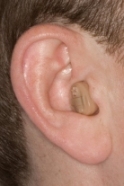 When I put the SpeechEasy in my ear, my brain seemed to be highly distracted by what it was having to deal with, so stuttering, and more particularly, focus on the words, did not really enter my mind while I had the device in. I believe my focus was drawn to the sounds I was making rather than the words I was saying. Focus on sounds, rather than words, to correct stuttering, is a little understood or appreciated phenomenon which I will talk about in a future post. Now this all seemed to go very smoothly for a long time, and I was convinced that I would never have to go back to using a fluency shaping method, and that the SpeechEasy was, “the answer”, to stuttering. I talked six of my friends into buying the SpeechEasy, after they tried mine, and experienced effortless fluency, but things began to change.
When I put the SpeechEasy in my ear, my brain seemed to be highly distracted by what it was having to deal with, so stuttering, and more particularly, focus on the words, did not really enter my mind while I had the device in. I believe my focus was drawn to the sounds I was making rather than the words I was saying. Focus on sounds, rather than words, to correct stuttering, is a little understood or appreciated phenomenon which I will talk about in a future post. Now this all seemed to go very smoothly for a long time, and I was convinced that I would never have to go back to using a fluency shaping method, and that the SpeechEasy was, “the answer”, to stuttering. I talked six of my friends into buying the SpeechEasy, after they tried mine, and experienced effortless fluency, but things began to change.
Slowly over a period, I started to notice that my stuttering was beginning to return, even when I was wearing the device, until finally after about three months, I had returned to by former level of severe stuttering, even while using the device. So why was this? Well I cannot be sure, but I think that my brain made some internal adjustments, to compensate for the delay, (about 70 milliseconds), in hearing myself speak. I no longer listened to my speech through the ear that housed the SpeechEasy device, but listened through the unaided ear, and pretty much ignored what was happening in the other ear. I was also beginning to focus on words again, and ignore the sound in my ear. I also had some trouble using my fluency shaping skills when I used the SpeechEasy. I found that I was no longer getting the effortless fluency, that I had been getting while wearing the device constantly over the prior 3 month period, and in fact sometimes my stuttering was worse.
So why had this happened? Well as mentioned, I figured that my problem was that my brain had learned to ignore the SpeechEasy effect, and instead of listening to myself through the Speech Easy when I spoke, I was now listening to my speech through the unaided ear. So what did I do? Well I did what any self-respecting obsessed seeker of fluency would do, and went out and got myself another SpeechEasy for the other ear. I was now wearing two SpeechEasy devices, one in each ear, at the same time. I referred to this setup, when I spoke to my friends about it, as I was “wearing two guns”. Well to say this was an experience is an understatement, and my hat is off to any person who has to where two hearing aids, in order to be able to hear. It was like having my head inside a stereo sound system, and if I was in a noisy restaurant, or noisy office situation it was hell. Speaking on the phone was also a bit of a challenge, especially when I got a bit of audio feedback going on, but it worked. With two SpeechEasy devices in at the same time I was fluent again, and I thought that this would fix my problem, of being able to hear myself speaking through the ear that had no altered auditory feedback.
As you can imagine, wearing two hearing aids on full volume with delayed auditory feedback, was not an easy way to get through the day, but when you are a severe stutterer, who needs to be fluent to function effectively in daily life, it was an acceptable price to pay at all levels. But the story is not a happy ending, because after about a month or two of wearing, “two guns”, the blocking and stuttering returned. I could not believe it. This was too much to bear. I had two SpeechEasy devices in on full volume on DAF with a tenth of a second delay, and blocking. Wow, what an experience that was.
So how could this have happened? Well once again, all I can say is that the brain is an amazing piece of apparatus. I can only think that it made the necessary adjustment, to negate the scrambling effect that the DAF is causing. I tried longer delays, FAF, switching between DAF and FAF, a combination of the two, but nothing would bring back the original positive effect on my fluency. I went back to wearing one Speech Easy, and really tried hard to focus on listening through the aided ear when I spoke, but I was never able to return to the original benefit, that I had received, when I had the device in for that first three months. Now the unusual thing was that all but one of my six friends, who had also purchased the devices, had found the same thing. Initially very beneficial, but then they stopped using the SpeechEasy. Some had stopped for reasons similar to myself, but the others had stopped because what they had to go through in wearing the device, did not outweigh the benefit that they felt they were getting, as far as improved fluency.
A few of us persevered, thinking that some improvement was better than none, but all of us ended up decided to shelf the SpeechEasy, and return to focusing on our fluency shaping skills instead. It then dawned on me that if our brains had learned to adapt to the SpeechEasy, then if we did not use it for a period, then when we put it back in, we would get the original effect again, but unfortunately after an absence of using the device for 6 months, and even 12 months, when we put the SpeechEasy back in our ear, we found that there was little to no benefit gained, from having it in.
So what does this mean for the SpeechEasy? Is it of no use, a scam and no-one should think of purchasing it? Well no. I believe it has its place. My friends and I had an alternative method of controlling our stuttering. We were able to return to persevering with those fluency shaping skills we had learned in therapy, and for me they work very well, but require a lot of work to maintain at a level where I am mostly fluent. However, for the person who has no such skills, I am sure that the SpeechEasy will reduce their stuttering, to some extent, and even over the longer period, as long as the person is prepared to put up with the issues that I outlined in my previous post, but that is a big ask for most. It is a matter of comparing the costs to the benefits, both in terms of dollars and what you have to put up with.
Now, having said all that, I believe that everyone should have a SpeechEasy, or similar device, in their “toolbox” of tricks that we all have to get through life with a stutter, but being asked to pay US$4,500 or more for a device that is as hit and miss as this, is just opportunism at its best. Should these devices cost that sort of money? Certainly not. These devices are being priced as though they are a cure, and they are certainly far from that, contrary to how they are being marketed by the developer and some speech pathologists. Why does an “In the Ear” Speech Easy cost US$4,500 in the USA when they cost about $150 to make in China, where locals can buy them for about US$300. One might argue that the investors and researchers need to recover their investment into research and development, but hearing aid technology and the concept of DAF has been around for a long time, and with chip technology and the cost of programming being at an all time low, this argument does not wash.Like all technology, have they been reduced in price, no, so why not? Hopefully those associated with the companies that manufacture and sell the device, and hold the US patents for the “idea”, as well as those associated with the university that supports them, will reduce the price to where it should be, so that people who stutter can buy one of these devices to tuck into their back pocket, without it costing them an arm and a leg.
In conclusion, I feel for the parents of children and adolescents who are told about these expensive DAF devices. They know little about the true nature of stuttering, and how the brain works, nor do they know anything about the success rate or otherwise of the SpeechEasy device. They want to help their child and feel pressured to purchase one of these devices, yet most cannot really afford it, and do not know if it will help their child in the long run. Similarly the child or adolescent who has had a SpeechEasy device purchased for them, feels great pressure to use it, and to speak fluently while using it. This can cause financial hardship in some families, feelings of guilt, embarrassment, anger and frustration if the results that were expected by all concerned, are not achieved, which is likely to be the case in the majority of instances.
If you are really wanting to try DAF, I recommend trying a much cheaper device, that works the same way as the Speech Easy, but costs much much less, and is much more versatile, in that it can be used in both ears instead of only one, is easier to adjust and can be resold if you decide not to use it. I will be writing about such a device in the near future but in the mean time if you want some information on it, email me at jack@stutteringjack.com. Having said everything above, I believe that every person who stutters should own a DAF device of some type, to keep in their back pocket, to be used when you are having a rough day and need something that will reduce your stuttering to some extent. Just don’t pay more than US$900 for it.
Comments:



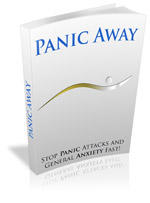
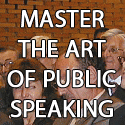


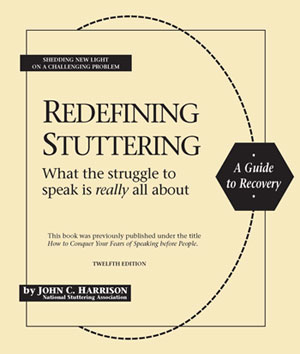
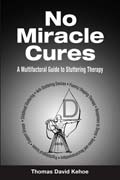
{ 11 comments… read them below or add one }
This article is very informative. Although DAF is the main technology used in most speech devices that are sold on the internet, there is one speech device that has helped many stutterers without using DAF as the technology in the device. This device is called ‘StutterFree’ and the technology used is DMAF which actually uses the Vocal Tone of the persons Vocal Folds ( vocal cords) to produce an effect that ‘teaches the vocal muscles to relax and form the correct way of speaking, without the habit of the past muscle movements.
Without getting into the technology, I can surely say, that the StutterFree Speech Tool helps the stutterer get back fluency without the problems of the DAF devices that are on the market today. These problems that StutterFree does NOT have, are the background noise problem and the “loss of effect” problem of the DAF device. So, as you can see, there is another device out here, that the stuttering public can make use of. Maybe this short reply has opened a few eyes. Thank you, Lauri K
Jack, this is a great post. I had a recent experience on the phone. I was talking to the other person and everytime I said a sentence, I could hear an echo of what I had just said. And everytime I said a sentence, it was completely fluent. It was like the echo was causing the fluency.
Hello Jack, Very good post. We all need to know the few factors about the SpeechEasy device that no one wants to tell about. It seems you have the facts down and thanks again. Chris
Thank you very much for your information & opinion of how you feel about using this device. I am trying to find out as much as I can before I decide if it’s worth it for my nephew with his stuttering problem. We are NOT rich that is for sure but I would love to see my nephew feel better about himself.
Hey Jack, Thanks for your comments and advice .I really support your lobby for easy access to the device, enabling people who stutter to get one more tool for their daily struggle.Imagine the poor people who do not even have means for their food but still need this DEVICE! Alexis
hi
i am very sad for stuttering,idont know what i do
reading your article with interest. if your looking for devices have u tried one of the Many DAF Android apps that are on the market these convert a android mobile phone or tablet into a DAF device for a few bucks
Very informative post. Some of my friends tried DAF gadget, made in Eastern Europe, so-called stutterstop, but cost 10-15 times less. Well, it is sort of ‘bulky’and not wireless, but same instant result (though I don’t know whether after 3 months fluency will go down as well). Know some people who recommend ‘shouting technique’ – takes lots of efforts but, FIRST OF ALL, it is free! And once fluency is achieved it won’t disappear.
Hi dr myself chandrashekhar pls email me on ck375000@gmail.com
Jack, I would like to know where I can buy speech easy device that cost least. I wish to have that device but it costs too expensive for me. Can you recommend me where I can buy that stuff?
Hi, Jack. I enjoyed your article about Speech Easy and learning about your experience with it. Have you tried another device since this post or had any other luck with the Speech Easy? I’m curious if this is a similar problem others have experienced that the company has been made aware of, as it seems like they should make their device re-sellable if it does’t work after a certain time period. Seems only fair! Also, I was curious as to what fluency shaping skills you use to help with your stuttering. Thank you kindly.